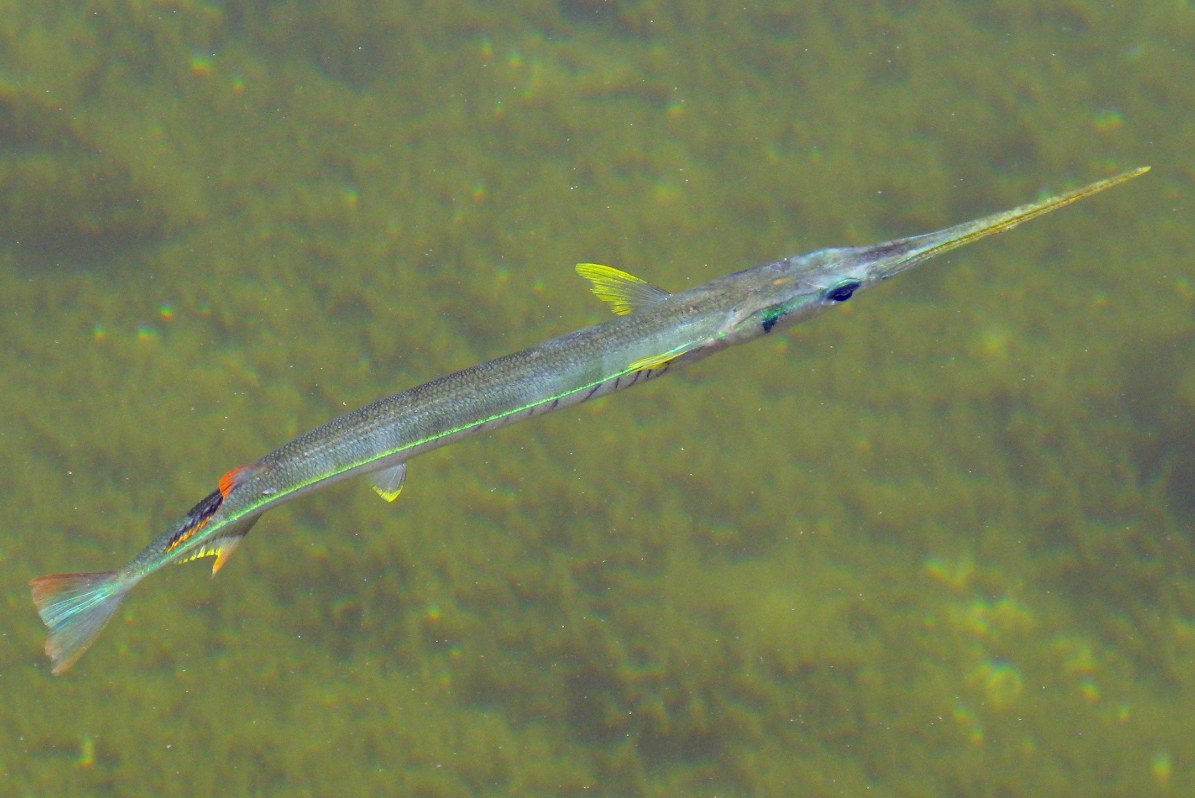Snake eels share an Order (Anguilliformes) but are in a separate Family (Ophichthidae) than morays (Muraenidae). They are named so because of their strong resemblance to snakes, and you may know a diver that claimed to have seen a sea snake while diving in Florida or the Bahamas. Sea snakes do not inhabit these waters. They likely saw a snake eel!
Of the 300 or so species of snake eels, five are represented in Caribbean waters. Meet 1 of them: the
goldspotted eel, a new addition to our
Giant Ocean Tank.
Distinguishing the goldspotted eel from other snake eels is easy. Look for the bright gold spots with black borders around them. In comparison, the sharptail eel - a past GOT denizen - has gold spots but no border.
Goldspotted eels can grow to almost 3 1/2 feet in length, though 1-2 1/2 feet is more common. Ours is a little longer than 2 feet presently.
Goldspotted eels - like
morays - are nocturnal and feed mainly on crabs. This guy hasn't eaten yet (as far as we know) but is being offered shrimp and clam tongue pieces daily. In fact, every day during the 10:00 dive, we seek out all of our eels (6 morays, 1 snake eel) to offer seafood to each one. Typically, only 1 or 2 eels will eat per day. If you are at the Aquarium, look for a diver with a yellow stick (safety first!) and a blue catch bag.
The best spot to possibly catch a glimpse of our goldspotted eel, is at the top of the reef, in the center... though no guarantees - he likely will move around a lot!
Chris
Now don't you want to see this cool animal? Get in the door quicker. Buy your tickets online and print them out at home.











